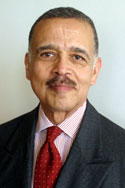ARCHIVES
OF EDITORIALS
February 10, 2005
Promising research
For African Americans, a knowledge of their history
is more than an interesting pastime. It is important to have a
profound understanding of the past because present media characterization
of blacks is generally unflattering. Blacks bear the intolerable
burden of being slandered both for their ancestry and for their
alleged incompetence in the present. Only a clear understanding
of the truth will set blacks psychologically free.
Unfortunately, during Black History Month, intensive attention
is given to the slave trade and the experience of racial discrimination
in the South. Indeed, these periods should not be overlooked.
However, there is so much more to learn about the migration of
blacks out of Africa to the rest of the world.
A special project at the Schomburg Center for Research in Black
Culture in Harlem proposes to do just that. Their study entitled
“In Motion: The African-American Migration Experience”
documents the migrations of everyone of African ancestry in North
America.
The exhibition, the result of a three-year project costing $2.4
million, opened last week at the Schomburg Center’s Exhibition
Hall. However, those unable to visit New York can gain access
to the information on the Center’s website (schomburgcenter.org).
According to the study about one million sub-Saharan Africans
have emigrated to the United States in the past 30 years. This
is twice the number that came during the slave trade. Also Afro-Caribbeans,
Central and South Americans of African descent, and Europeans
with African roots have come to this country in substantial numbers
in the past 15 years.
The exhibit also records the re-migration of African Americans
to the South. Between 1995 and 2000 an estimated 680,000 African
Americans moved to the South and 330,000 left, for a net gain
of 350,000. This indicates that many African Americans now find
the living conditions in the South to be far more congenial than
years ago when racial discrimination was prominent.
The Schomburg exhibit has opened many more lines of historical
inquiry. It also demonstrates that there is considerable ethnic
diversity among groups from the African diaspora. There are stories
of courage, ingenuity and loyalty sufficient to ennoble any racial
group. Perhaps the Schomburg exhibit will stimulate a new approach
for telling the story of African Americans.
Just between us
Much attention is given to the problem of racial
discrimination in America. People often forget that individuals
and families still have to confront those interpersonal problems
which are ever present regardless of race. To provide some guidance
in resolving such issues the Banner will introduce a new column,
“Just Between Us.”
This will be a bit more than the traditional advice column. Its
authors Katrina Huff and Ferlin Charles are both well educated
with masters degrees in social work from Simmons College and Boston
College, respectively. They are both licensed professionals capable
of offering sound advice.
Their early columns will be based on case studies from their private
practice. Readers are invited to submit questions by fax (617-261-2346)
or by mail to:
Bay State Banner
23 Drydock Avenue, Boston, MA 02210
Attn: Just Between Us
All stories will be published anonymously.
Home
Page

